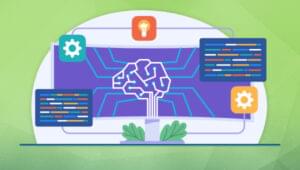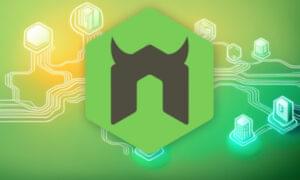The following is republished from the Tech Times #173.
Are you a Mac person or a PC person?
Having recently dipped my toes in the Apple pool, I have a theory about why people seem to fall in love with the Mac when they try it. Believe it or not, it has something to do with the future of Internet Explorer, and of the Web itself!
Mac vs. PC: What floats your boat?
Okay, I’ll admit it: I fell for the Mac—hard. Just like all the other geek fashion victims before me, I’ve come to depend on my Mac as if it were a part of me, and I’m happier with it than I have been with any other computer before it.
I went in with a healthy dose of skepticism, mind you. I was determined not to become one of those suckers who hugs his Mac to his chest, gleefully exclaiming “I love it! It just works!” Oh no, the Mac would have to prove to me that it was actually better than the ubiquitous PC.
Heck, it took Apple announcing that you could run Windows on a Mac for me to be willing to give it a try. After all, if the Mac lifestyle wasn’t for me, I could always turn the thing into a Windows box.
No, I wasn’t going to be seduced by the eye candy, the subtly animated user interfaces, or the tasteful industrial design. “Web designers and developers everywhere are switching,” I reasoned. “If only for research purposes, I need to get on top of this Mac thing.”
So why, six months later, am I a Mac convert? Quite simply, Mac OS X has a lot less baggage than Windows.
The desktop version of Mac OS X was released in 2001, representing a clean break from what had come before. Although its Unix roots run deeper, in practical terms none of the the end-user functionality of Mac OS X is more than 6 years old.
The current generation of Windows, meanwhile, is backwards compatible with Windows 95 (released in 1995), both in terms of supported programs and in terms of user experience. The fundamental structures of the Windows operating system, therefore, are 12 years old—twice the age of Mac OS X.
To Microsoft, this is a point of pride. That any company can deploy a business critical piece of software and know that it will continue to work on new operating system versions for decades to come is an important selling point for Windows.
Meanwhile, Apple has a long history of breaking backwards compatibility when doing so will add significant value to its products. In 2001, every Mac user had to learn to use a computer all over again, when the user experience of Mac OS X was redesigned from scratch. And by 2005, when Apple dropped support for pre-OS X software, Mac users had to have replaced all of their software.
These breaks with the past would be completely unacceptable in the Windows world, but they enable Apple to keep the Mac fresh, and free of clutter.
As a power desktop user and developer, I’d say I use no more than 10% of the functionality of Windows Vista. The rest of the operating system sits there, a ramshackle collection of components supporting ancient technologies that I will never use again, taking up space and getting in my way.
For the vast majority of desktop users like me, using Windows today is like making a solo around-the-world voyage in an aging cruise liner. It’s nice to have three ballrooms, an Olympic swimming pool, and a rooftop driving range to yourself, but all they’re likely to do for you is collect dust while you’re busy steering clear of icebergs.
If you’re happy to update your software, hardware, and computing skills at least once every four years, the Mac platform is the sleek and speedy yacht you want for that world record attempt. After six months, I’d say I use roughly 60% of the functionality on offer in Mac OS X. That’s pretty darned good for a general desktop OS.
![]() Join the coversation! “Mac vs. PC: What floats your boat?” in the SitePoint Forums
Join the coversation! “Mac vs. PC: What floats your boat?” in the SitePoint Forums
The Future of the Web
So, what does any of this Mac vs. PC stuff have to do with web development? Well, both Microsoft and Apple write web browsers as well as operating systems, and it turns out they build browsers in much the same way as they build operating systems.
At the upcoming Web Directions South 2007 conference in Sydney, Microsoft’s Chris Wilson will be speaking on the subject of “Moving the web forward.” I expect this talk to be similar in spirit to a lengthy statement he made this past April, in which he explains how important it is for browsers like Internet Explorer to maintain backwards compatibility, so as not to “break the Web” the way he feels IE7 did.
This is very much in keeping with Microsoft’s approach to Windows: build on top of what’s there, and never, ever break backwards compatibility if it can be helped. After all, there are hundreds of millions of people relying on old web sites out there, and Microsoft is responsible for keeping those old web sites running.
Apple’s approach with Safari is that if you’re using a current browser, the web sites you rely on are likely to be relatively current as well. And if an old site doesn’t display quite right, well that’s to be expected. It’s not like the information contained in the site is lost to the world. If the site is valuable, someone will update it to comply with web standards that will ensure its long-term accessibility. And there’s always View Source.
Are the people making the switch to the Mac (and therefore away from Internet Explorer) the special few that can get by without accessing older web sites? I don’t think so. I think users are happy to put up with a loss of backwards compatibility when they are given the choice.
Microsoft made a mistake, I feel, in releasing IE7 as a forced, automatic update. The intent was to get users onto a more secure browser as quickly as possible, but bundling a new rendering engine in with the forced security updates was a mistake. When old sites didn’t work in the new browser, users felt they were having incompatibility imposed upon them, rather than choosing to make a sacrifice in exchange for a shiny, modern browser.
Had Microsoft’s plan succeeded, web developers everywhere would have been treated to the overnight adoption of a more standards-compliant IE, but what we’ve seen instead has been lukewarm adoption at best. Even on a site like SitePoint, where you’d expect a lot of early adopters, IE6 still represents about half of our Internet Explorer
visitors.
Apple automates Safari security updates too, but reserves its improvements to rendering and standards compliance for updates that users may choose to install or not. And because of this, it seems, Safari users are much more likely to install the latest version.
For better or worse, Microsoft’s new “backwards compatibility at all costs” approach to writing browsers is coloring the development of the HTML 5 specification, which is chaired by Chris Wilson. Microsoft wants to outlaw standards that, to be adopted, force browsers to abandon support for their previous, non-standards-compliant behavior.
![]() Join the conversation! “Mac vs. PC and the Future of the Web” in the SitePoint Forums
Join the conversation! “Mac vs. PC and the Future of the Web” in the SitePoint Forums
Which is the right way for the Web? Should backwards compatibility rule at all costs, or is there room for breaking changes when users are given the choice of when to upgrade? As a happy Mac user, I know which one I prefer.
I’d love to hear your thoughts!
 Kevin Yank
Kevin YankKevin Yank is an accomplished web developer, speaker, trainer and author of Build Your Own Database Driven Website Using PHP & MySQL and Co-Author of Simply JavaScript and Everything You Know About CSS is Wrong! Kevin loves to share his wealth of knowledge and it didn't stop at books, he's also the course instructor to 3 online courses in web development. Currently Kevin is the Director of Front End Engineering at Culture Amp.



































































































